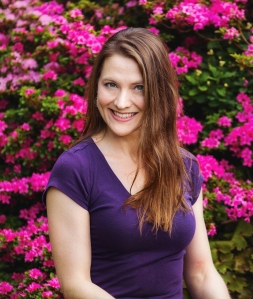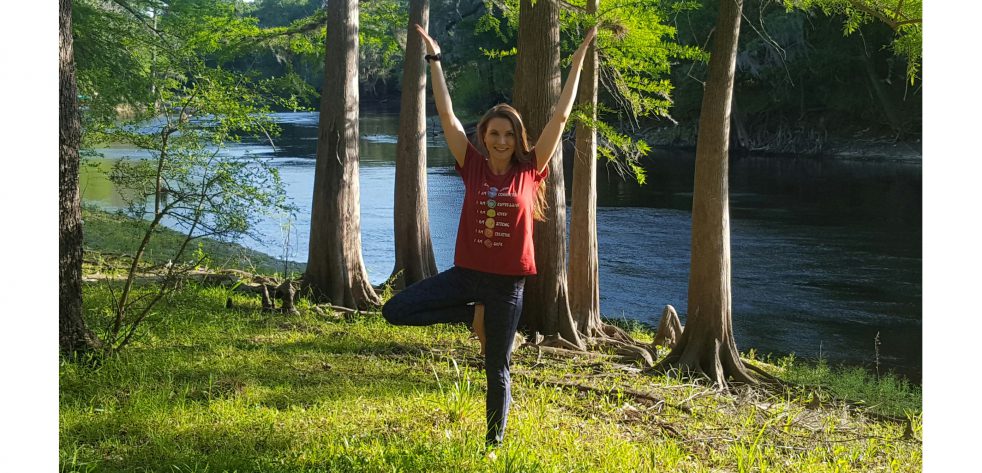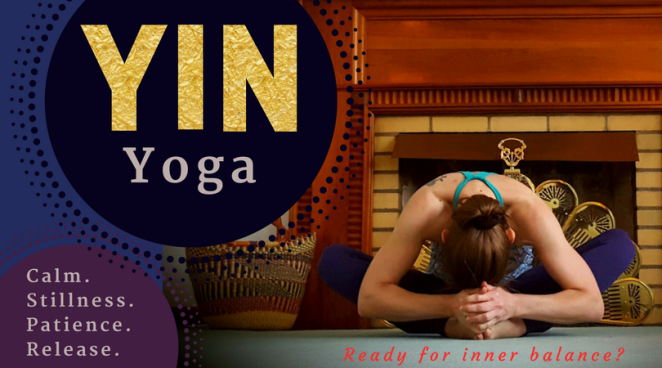What is Yin Yoga, and Why Do It?
Yin yoga is a slower, more visibly passive form of yoga, yet it leads to very deep opening. The focus is upon gradually stretching to release even connective tissue around the joints, particularly the knees, pelvis, sacrum, and spine. Because this approach requires us to slow down, the mental component of Yin Yoga is also at the forefront, and it certainly helps develop patience as well as body-awareness.
Yin Yoga uses an approach slightly different than most yoga practices, usually done while standing and maintaining movement from pose to pose. To practice Yin Yoga, you position the body with careful support (such as blankets or forearms, for example) and then hold classic and often simple yoga postures for long lengths of time—often up to five minutes. The generous use of props such as blankets and blocks facilitate these long holds. Maintaining a supine, seated, kneeling, or prone supported pose brings sensation to the muscles and, eventually, there is a lessening of tension around the connective tissues in the body, particularly the fascia—the webbing-like structures encasing the whole body. Whereas working the muscles of the body requires heat and thus lots of movement, to strengthen bone tissue, tendons, and ligaments, slow pressure provided by these deep, long holds loosen sustained gripping in the body and stimulate strength of these tissues.
The techniques of Yin Yoga were first introduced by Paulie Zink, whose theoretical underpinnings were influenced by Daoist philosophy. He began fusing his training in yoga and martial arts, and increasingly encouraged long holds of postures to increase flexibility. Paul Grilley built upon these ideas, and integrated notions from Chinese medicine of managing qi (chi), or life-force, and meridians (energy channels) to enhance optimal systemic balance. While most active, common forms of yoga are considered a yang style, Yin Yoga aims for a cooling process to calm and release. These concepts are somewhat analogous to the systems in Indian yoga of clearing or disciplining nadis (energy channels) and chakras (energy wheels or intersections) to allow prana (life force) to balance and facilitate health as wholeness. Yoga teacher Sarah Powers furthered Yin Yoga techniques to focus postures toward specific meridians lines in the body, and she placed even more emphasis on Buddhist psychology so that the practice became as important for mental clarity. Moreover, Powers also refined approaches to breathing to enhance the affects of Yin practice.
There are often three distinct steps to a Yin Yoga pose: take the shape; find stillness in that shape; and then stay. Because of its slowing and cooling approaches, Yin Yoga is a superb method to refine your abilities of bodily and mental awareness; you learn how your breath and body connect, and observe the often capacious, meandering activity of your mind. Hence, the practice also entails stilling and refining your thought patterns as well as how you hold your body. Due to the long holds, the ambiance of this class is meditative and quiet. That doesn’t mean it is necessarily easy, as gentle pressure or slight discomforts emerge during the process. Thus, a great deal of patience, acceptance, and surrender is cultivated during Yin Yoga, all of which bring—like the deep tissue work in the physical body—a deepening understanding and relaxation of the workings of the mind.
Additional benefits of Yin Yoga may seem paradoxical: the physical sensations and mindfulness as the practitioner slowly comes out of the asana (pose). Initially, the body may feel less mobile or slightly out of the usual sense of power and control. There might be a sense of noodle legs, delicate joints, or overall sensitivity. The student gains compassion for the sensations of aging or repair after injury. Yet, these sensations of fragility and foreignness soon pass, and leave the body feeling more open.
Want to experience this sense of RELIEF for yourself?
I am Virginia Hill, the driving force of AHA Yoga, and am thrilled to announce I just opened a very special one-afternoon YIN YOGA class, YIN YOGA for LIGHTENING & BRIGHTENING MOOD, Sunday, February 11, 2:00 to 3:30 pm, at the lovely Suwannee River Yoga Studio. It is a slow-paced class, focusing on the lower body, especially the ankles and hips, and focuses on the liver meridian, the center for processing irritability and transforming it to kindness and joy. Registration is now open; save your place here!
Who benefits?
Following the teachings of Grilley and Powers, most Yin Yoga classes are intended as a necessary and inviting complement to conventional, more obviously active hatha yoga styles. Which populations might benefit the most? The answer might be surprising, as it initially seems like opposing groups. Yin Yoga is ideal for athletes, especially runners and weight-trainers, who tend to have bulk yet ache from tightness. It is also well-suited for those suffering from inactivity, where dry, stiff, and achy joints may have set in. Due to its gradual release, it is also an important practice for those whose bodies are fraught with scar tissue, and it may soothe those students with inflammation, such as acid reflux, pain, acne, rashes, and redness. Due to its meditative nature and the necessity for lean into discomfort as you calm the mind, Yin Yoga can prove difficult yet incredibly fruitful pursuit for over-zealous or impatient types, those that need to soothe and tame their tempers. As a cooling process, it is also quite a boon during the heat of summer and provides a respite many Floridians might appreciate. And since it releases strain in areas often considered unmalleable, Yin Yoga often results in increased flexibility and comfort required by avid meditators so they may sit for longer periods of time. You may even find that the calm patience and kind surrender required in Yin Yoga means your loved ones and all those around you may benefit from your practice.
Yin Yoga includes just a few basic postures thus, combined with its slow pace and still holds, some may think it is an easy practice. Yet, like Restorative Yoga or deep relaxation practiced in Svasana or disciplines such as Yoga Nidra, Yin Yoga is considered by many an advanced practice, precisely because the hyper-vigilance and uber-rational or aggressive “think your way through it,” “push your way through it,” or “figure it out with force” approaches must be laid aside for a calmer, more intuitive, and mindful approach of surrender. Yin Yoga requires and encourages a clear head, commitment to deeper sensations, and relinquishing of busy-ness and hefty-handed control, and builds, instead, the subtle wisdom and knowing of the body.
Ready to give Yin Yoga a whirl?
I will be teaching a new class, YIN YOGA to LIGHTEN & BRIGHTEN MOOD soon! Join me Sunday, February 11, at 2 pm for this Yin Yoga experience. This class is designed to release emotional as well as physical tension. For this day only, you will even receive a take-home study sheet so you can continue practicing at home. Come try this delicious practice and feel the deep sense of spaciousness and relief Yin Yoga provides!
Sources:
Special thanks to my dear friend and colleague, Marg Pedroza of Pflugerville Yoga, for sharing her research and experience of Yin Yoga, and her encouragement that I pursue it.
Paul Grilley, “Why Try Yin Yoga?” Yoga Journal (August 28, 2007).
Paul Grilley,The Complete Guide to Yin Yoga: The Philosophy & Practice of Yin Yoga. Vancouver, B.B. Canada: Wild Strawberry Productions, 2012 (org. edn. 2011).
Lisa Marie, with Sarah Powers. “Slow Down with Yin Yoga.” Yoga Journal (October 7, 2008).
Yin Yoga, Paulie Zink, founder.
Disclaimer: Always consult your healthcare provider before practicing yoga, or any other exercise program. The information provided on this web site is intended for educational purposes only, and not as a substitute for medical advice or treatment. The author, illustrator, editor, and publisher assume no responsibility for injuries or harm that may result from practicing yoga or any other exercise program.
Mission: The mission of Alligator Healing Arts Yoga is to share yoga techniques of asana (postures), breathing exercises (pranayama), and meditation, to foster deep calm, overall health, and self-awareness, so that each student experiences continual physical and mental wellness and empowerment. Histories, symbolism, and philosophies of yoga are introduced to encourage wise intention, expression, and understanding in our everyday lives.
Is your appetite whetted for YIN YOGA? Don’t forget to act soon, as my one-day course Yin Yoga for Lightening & Brightening Mood, Sunday, February 11, at 2:00 to 3:30 pm is expected to fill quickly. Space is limited to 10 students. Reserve your place now!
If you’re ready for deep release and a calmer mind, register here for Yin Yoga to Lighten & Brighten Mood.

Looking forward to seeing you on the mat! —Virginia Hill, AHA Yoga Teacher


You must be logged in to post a comment.